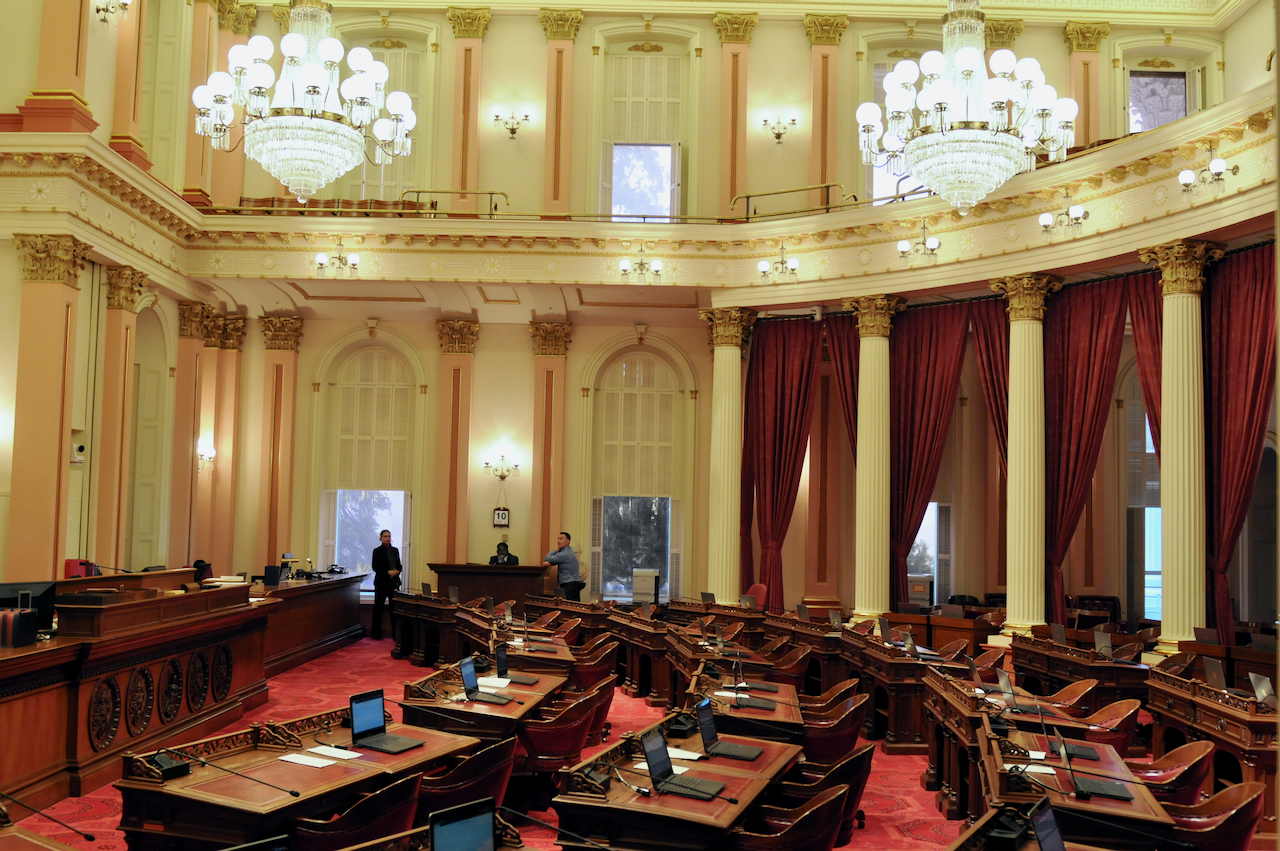
The Legislative Bill Room, California State Capitol. (Photo: ca.gov)
An Introduction to Bill Drafting in California
Many are unaware of how much thought must go into legislative drafting
By Chris Micheli, November 2, 2024 1:02 pm
Pursuant to Article IV, Section 1 of the California Constitution, the Legislature and the People share the lawmaking power. In drafting legislation (including proposed initiatives by the people), California’s Office of Legislative Counsel follows a number of drafting principles. First, there are the formal rules that are contained in the state Constitution, California’s Government Code, and the Joint Rules of the Senate and Assembly Second, there are the informal rules, including principles of statutory interpretation and general guidance in drafting.
Among the general guidance in legislative drafting in the California Legislature, the attorneys in the Office of Legislative Counsel follow rules of proper grammar and they strive for clear, concise, and consistent language generally. OLC attorneys also try to avoid ambiguity, which otherwise will lead to differences in interpretation, among those trying to comply with the law (e.g., individuals, businesses, the regulated community), those enforcing the law (e.g., a state department or board), and those interpreting the law (i.e., the courts).
Not only do the OLC attorneys draft thousands of bills for introduction each year, but also thousands of amendments to these bills. In addition, consultants in the Assembly and Senate standing committees, legislative staff, lobbyists, lawyers, and government affairs professionals engage in bill and amendment drafting.
In doing so, many are unaware of how much thought must go into legislative drafting and why all those working in and around the California Capitol should be thankful that, pursuant to the Joint Rules, all bills and amendments must be in “Legislative Counsel form” before they will be accepted by the Assembly Desk or the Senate Desk for processing.
Let me give a sample of why OLC attorneys are so beneficial. Understand at the outset that, while 3 separate bill drafters could draft three slightly different versions of a bill for a client, there are also hurdles to overcome if the inexperienced drafter is unfamiliar with some basic provisions of state law, or drafting guidelines, or principles of statutory interpretation.
The following is a basic example for those new to legislative drafting in order to understand the consequences of inadvertent drafting mistakes, or not understanding the implications of a client’s (e.g., a legislator’s) bill drafting request.
Your task is to amend the following statute to also exempt baby bottles from the sales and use taxes, and to sunset the provisions on January 1, 2027.
Existing law found in Section 6363.9 of the Revenue and Taxation Code: On and after January 1, 2020, there are exempted from the taxes imposed by this part the gross receipts from the sale in this state of, and the storage, use, or other consumption in this state of, diapers designed, manufactured, processed, fabricated, or packaged for use by infants, toddlers, and children.
Example 1:
Language: On and after January 1, 2020, and before to January 1, 2027, there are exempted from the taxes imposed by this part the gross receipts from the sale in this state of, and the storage, use, or other consumption in this state of, diapers and baby bottles designed, manufactured, processed, fabricated, or packaged for use by infants, toddlers, and children. This section shall be inoperative on January 1, 2027 and, as of that date, is repealed.
Discussion: In this example, the drafter added the requested item, baby bottles, to the statute, as well as the sunset date. While the sunset date language is correctly drafted, it applies to both baby bottles (newly added) and diapers (existing). Is that what was intended? Wouldn’t the supporters of existing law (i.e., the exemption for diapers) unhappy? Existing law already applies to infants, toddlers, and children. Now there is a fourth category – baby. Should baby be used and defined? Or would existing law cover a “baby”? There is also a principle of statutory interpretation that the descriptive language following the subject (in this case, the “designed, manufactured…and children) applies to the last item, which now would be baby bottles. Such an interpretation would remove this language from modifying “diapers,” and would create a conflict with existing law and the new word “baby.”
Example 2:
Language: On and after January 1, 2020, there are exempted from the taxes imposed by this part the gross receipts from the sale in this state of, and the storage, use, or other consumption in this state of, (a) diapers designed, manufactured, processed, fabricated, or packaged, for use by infants, toddlers, and children, or (b) baby bottles. The act adding this subdivision shall be inoperative on January 1, 2027 and, as of that date, is repealed.
Discussion: In this example, the drafter added the requested item, baby bottles, to the statute and created a new category, baby, to the existing statute. The sunset date (i.e., repeal clause) would apply to the addition of baby bottles and not affect the existing law on diapers. However, the amended language might be interpreted as applying retroactively back to January 1, 2020, the date the diaper exemption began operative. Was this the intent of the supporters of adding baby bottles to the statute? If so, this would possibly violate the “gift of public funds” prohibition in the state Constitution, and would at least require a “plus section” explaining the public purpose of such a retroactive change in the law.
Example 3:
Language: On and after January 1, 2020, there are exempted from the taxes imposed by this part the gross receipts from the sale in this state of, and the storage, use, or other consumption in this state of, diapers designed, manufactured, processed, fabricated, or packaged for use by infants, toddlers, and children.
Add new Section 6363.10 to read: (a) On and after January 1, 2025, and before January 1, 2027, there are exempted from the taxes imposed by this part the gross receipts from the sale in this state of, and the storage, use, or other consumption in this state of, bottles designed, manufactured, processed, fabricated, or packaged for use by infants, toddlers, and children. (b) This subdivision shall be inoperative on January 1, 2027.
Discussion: In this example, the drafter essentially left existing law alone, except to make it a new section. The new exemption for bottles is placed in a new subdivision using existing law for a sales and use tax exemption, along with the requirement that it be used by infants, toddlers, and children. And, the new exemption would be in effect for the desired time period. This version also excludes the repeal language because, at least in the tax laws in which prior tax years can be amended by the taxpayer or audited by the relevant state tax agency, the better approach is to make it inoperative.
As the reader can see by these three examples, those unfamiliar with some key drafting rules and principles may inadvertently create ambiguities or even violate state law by simply trying to add a new category of product to an existing sales and use tax exemption.
- Child Custody Investigations - December 19, 2025
- Health Insurance for Child Support - December 18, 2025
- Sale or Disposal of Unclaimed Property - December 18, 2025



